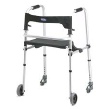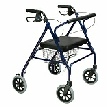www.thetinman.org Copyright © All rights reserved.

Disclaimer: The material presented in this site is intended for public educational purposes only. The author is not offering medical or legal advice. Accuracy of information is attempted but not guaranteed. Before undertaking any diet, or health improvement program, you should consult your physician. The author is in no way liable or responsible for any bodily harm, physical, mental or emotional state of any patient reacting to any of the content on this site. Thetinman.org has not examined, reviewed or tested any product or service mentioned herein. We are not being paid to advertise or promote any product or service mentioned herein. The links are offered strictly as examples of resources available. The site assumes no responsibility or liability of any kind related to the content of external sites or the usage of any product or service referenced. Links to external sites were live at the time of creation of the link. Thetinman.org does not create content for or manage external sites. The information can be changed or removed by the external site’s administrators at any time and they are responsible for the veracity of their information. Links are provided to support our data and supply additional resources. Please report broken links to administrator@thetinman.org. Thetinman.org is not a charitable foundation. It neither accepts nor distributes donations or funds of any kind.


Will you be using it outdoors, indoors, or both? If you only need assistance walking longer distances while on outings, a simple easy-to-fold push chair is lightweight and can easily be placed in the trunk of a vehicle. Light-weight wheelchairs can often be rented at amusement parks, zoos, etc. They are available at some shopping malls. Wheelchair transport is available at most airports at no cost to you.
Motorized scooters are often provided by grocery and large retail stores.
If you need a wheelchair full-time, there are many options with customizable features such as back or trunk support, brake extenders, swing-away and removable leg rests, removable arm-length arm rests, and a firm seating base with a pressure relief cushion. There are more advanced electronic-controlled devices for special needs. Learning how to maneuver a wheelchair takes time and patience.
When purchasing a wheelchair, there are a few things to consider. Is it electric? How fast does it go? How long do the batteries last between charges? What type of battery powers it? What does it cost to replace the battery? What attachments do you need or want: footrests, fixed, swing away, leg rests, leg elevation? Can the seat be adjusted? Does it have armrests or neck support?
You will need a prescription and a letter of necessity from a doctor for insurance to consider paying for it. Insurance plans vary. Check with your insurance to see if they will cover the cost. Retailers are often able to help you with the approval process.
Motorized scooters require batteries. If you intend to use the scooter for prolonged periods of time, you may need to travel with an additional charged battery. There are many types of motorized scooters to choose from. Some can be controlled with a joystick. Learning how to maneuver a scooter takes time and patience. They may or may not be covered by insurance or Medicare. The retailer can often help you with the approval process.
Heavy wheelchairs and scooters are difficult to get into vehicles and may require special modified vehicles or vans with ramps.
In choosing where to purchase your wheelchair, you should find out how long the company has been in business. If they offer a warranty, what type and how long (lifetime)? If it needs repairs, is there a local service center or does it have to be shipped to them? Do they offer incentives for trading in old chairs for new chairs?
Vitality Medical Mobility Aids
Life Solutions Plus Mobility Aids
Some wheelchairs and scooters are covered or partially covered by insurance, medicare, or medicaid.
MLN/MLNProducts/downloads/PMD_DocCvg_FactSheet_I CN905063.pdf
Medicare (wheel chair and scooters)
Social Security Disability Coverage
You may need to have a ramp installed so you can access your home with mobility aids. Portable ramps are a cost-effective way to help persons with handicaps to maneuver over steps and stairs. Longer ramps can also be used to access vans and other transportation without requiring an expensive chair lift.
http://www.homehealthmedical.com/c/Mobility-Aids/Ramps
http://www.discountramps.com/wheelchair-ramps/c/3100/
http://www.1800wheelchair.com/category/ramps/
http://www.ezaccess.com/catalog/category/4/residential
A handicap accessible door should be at least 3 feet wide. However, it is not always possible or affordable to widen a doorway to accommodate mobility aids. If you have sliding glass doors, consider replacing them with French doors that offer a wider opening.
Replacing doorknobs with easy-to-grip handles is another way to ease entering and exiting a home for someone with physical limitations. Installing expandable offset hinges can widen doorways for wheelchair and walker access by up to 2 inches. These hinges allow access to the full width of the doorframe.
If you choose to remodel to increase the convenience and comfort of your home, how you select, hire and manage the independent contractor often defines a successful project.
If you have stairs, you may want to consider a chair lift. Some travel straight up the stairs ($3,000 to $5,000 installed), others can negotiate curves ($10,000-$15,000 installed). Lifts can be weatherproof for outdoor steps. There are standing stair lifts (also called perch lifts) for those who have trouble bending their knees. You need to know whether the lift mounts to the stair treads or to the wall. Tread-mounted can be more secure. Wall-mounted may require the wall to be reinforced. There are electric and battery-powered versions. Some companies offer the ability to rent units. Others offer financing options. Chair lifts are not covered by Medicare, but some states offer Medicaid waivers and the VA offers cash grants for veterans.
http://www.bruno.com/stairlifts-home.html
http://www.handicare.com/us/home.aspx
A physical evaluation of your mobility and balance can help you determine what your mobility aid needs are.
Balance Evaluation Systems Test File Link
Balance Evaluation Systems PDF
For help in choosing a mobility device, read: http://www.ada.gov/opdmd.htm
CANES & WALKING STICKS
If you need the cane only for balance, consider a standard cane with a single tip. If you need the cane to bear weight, you might choose an offset cane with four tips. Tripod or quad canes can be placed too close to the feet or may be unstable if all tips do not touch the floor at the same time. Some canes provide support for your forearm.
A straight cane with a rubber tip is best. Rubber grips the floor much like the tread on car tires grips the road and provides traction on most surfaces. The tip should be supple and the tread should be kept in good shape. You can buy a replacement tip at a pharmacy or medical supply store if the tip becomes worn.
Standing straight with your shoes on and your arm at your side, the top of the cane or walker should reach the bend of your wrist. Your elbow should be flexed 15-20 degrees. The length is usually one-half the user’s height. (Example 64” tall, cane should be 32” tall). If the cane is too long, it is harder to pick up and move it. If the cane is too short, it can throw you off balance.
The best grip is a foam grip or a grip that is shaped to fit your hand. If you struggle with grasping your fingers or hand-locking, you might prefer a larger grip. A bad fit creates unnecessary stress on your joints. If you experience numbness or pain in your hand when using the cane, you need a different grip. A good grip helps prevent joint deformities.
If you use it for balance only, you should pick up and move your cane in unison with the opposite leg: right hand + left leg or left hand + right leg. Don't place the cane too far ahead of you.
If injury or disability affects your hip, knee or ankle, you might need to hold the cane in the hand opposite the affected leg and move the cane in unison with the affected leg. Keep the cane in place when step forward with the unaffected leg.
Be careful when navigating stairs. If one leg is affected by injury or disability, grasp the railing (if possible) with one hand and place the cane in the other. Step up with your unaffected leg first. Then step up with your other leg as you move the cane. To go down steps, put your cane on the lower step first, then your affected leg and then your other leg, which carries your body weight. Canes can be purchased or ordered through your local pharmacy.
http://www.fashionablecanes.com/
http://thewalkingcanestore2.com/
WALKERS & ROLLING WALKERS
Standard four-post walkers may cause you to fall backward when lifting it up. Special "rolling" walkers with large wheels, swivel casters, and hand breaks offer the greatest stability. Rollers with seats and baskets attached can be especially useful.
A two-wheel walker allows you to place weight on the walker as you move. The legs with allow you to easily push the walker forward, and the legs wheels without wheels prevent the walker from rolling while you're stepping forward. If you don't need to lean on the walker for balance, you might be able to walk faster with a four-wheel walker.
There are different types of grips from plastic to foam. Rollator-type walkers have hand breaks. It is important that you can grip the break to activate it if you choose a rolling walker. Most walkers come with plastic grips, but you have other choices as well. If your hands tend to sweat, you might be more comfortable with a foam grip. If you have trouble grasping your hands, you will need a large grip. The correct grip relieves unnecessary stress on your joints and helps prevent joint deformities.
The walker should fit you comfortably. The correct height reduces stress on your shoulders and back. Standing with your walker in front of you, with your hands on the grips, your elbows should bend at a comfortable 15 degree angle. The top of the walker should line up with the crease in your wrist. If it has a seat, the seat should meet the bend of of your knee.
Remain upright as you walk to protect your back. Leaning forward can cause you to fall. Don’t push walker too far in front of you or set the handles too high. Don’t hurry or take long steps. Change directions slowly. Do not try to climb stairs with the walker.
Accessories can be useful, but don’t overload your walker. Trays help you carry food, drinks, and other items. Pouches or baskets can carry items. Seats are convenient when you are out and about and need to sit to rest for a moment.
It is important to maintain your walker. Replace worn-out or loose rubber caps or grips. Excessively tight brakes increase your risk of falling. Debris and gravel can get stuck to the wheels. Wheels should be cleaned regularly. Rolling walkers and rollators can be ordered through your local pharmacy.
http://www.1800wheelchair.com/category/294/adult-walkers/
WHEELCHAIRS & MOTORIZED SCOOTERS
There are many types of wheelchairs: electric, folding, rigid frame, and specialty wheelchairs. Always try more than one wheelchair to find the right fit for you. Your needs will inform your choice: your physical limitations, strengthsand weaknesses, your body type, range of motion of arms, and muscle weakness, and physical endurance.

MOBILITY
Living with SPS Self Care Grooming Dressing Bedroom Safety Housebound/Bedridden
Kitchen,Cooking & Groceries Home Care Hiring a Service In-Home Care Exercise Mobility Driving
Managing Medications SPS & Pregnancy Organizing Information Financial Aid Legal Aid Mental Health
Anxiety & Depression Suicide Prevention Relationship Health Risk of Abuse Venting Caregiving


Disclaimer: The material presented in this site is intended for public educational purposes only. The author is not offering medical or legal advice. Accuracy of information is attempted but not guaranteed. Before undertaking any diet, or health improvement program, you should consult your physician. The author is in no way liable or responsible for any bodily harm, physical, mental or emotional state of any patient reacting to any of the content this site. Thetinman.org has not examined, reviewed or tested any product or service mentioned herein. We are not being paid to advertise or promote any product or service mentioned herein. The links are offered strictly as examples of resources available. The site assumes no responsibility or liability of any kind related to the content of external sites or the usage of any product or service referenced. Links to external sites were live at the time of creation of the link. Thetinman.org does not create content for or manage external sites. The information can be changed or removed by the external site’s administrators at any time and they are responsible for the veracity of their information. Links are provided to support our data and supply additional resources. Please report broken links to administrator@thetinman.org.